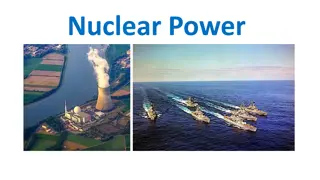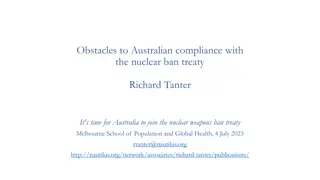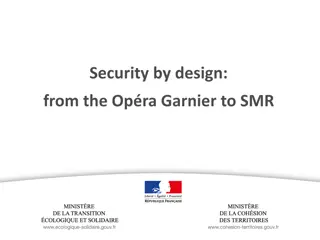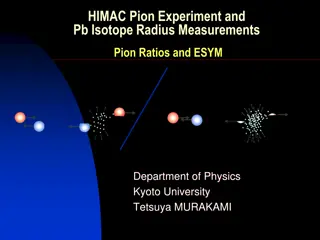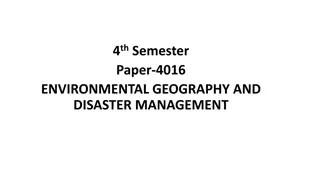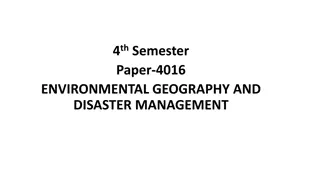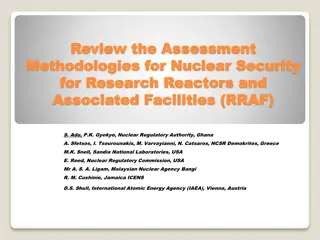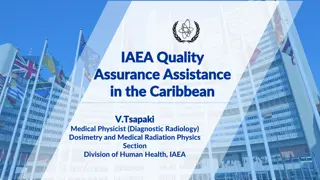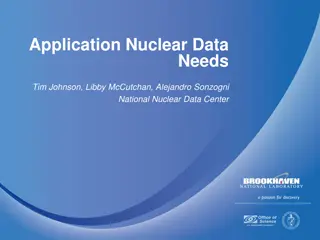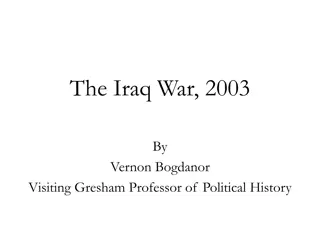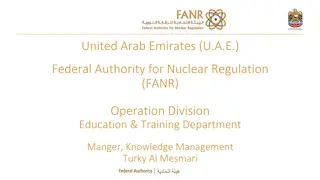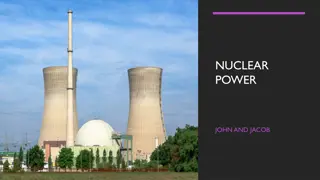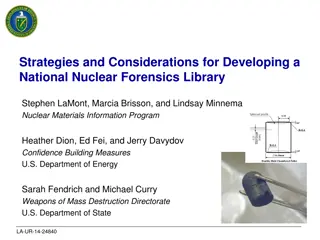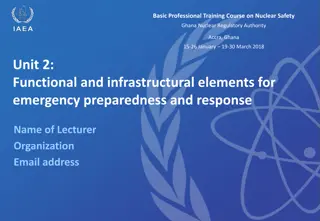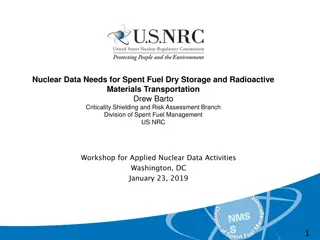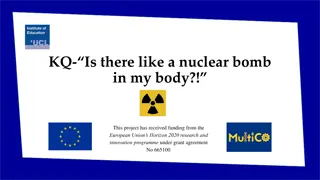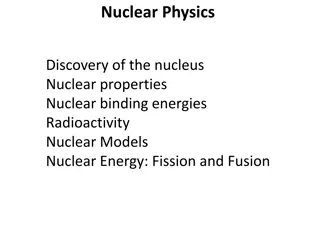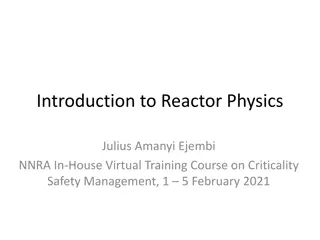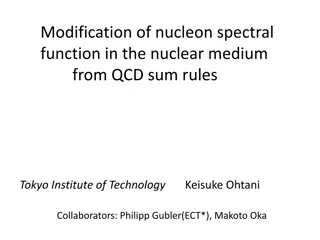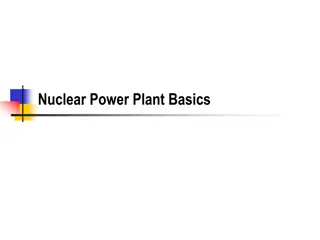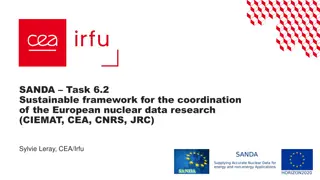Proposing Science and Technology Initiatives for Nuclear Security and Disarmament
This presentation discusses the role of the Comprehensive Nuclear-Test-Ban Treaty (CTBT) and the challenges associated with supercomputer simulation models in achieving nuclear non-proliferation goals. It proposes convening a Science and Technology Conference to address these challenges, engage civil society, and advance towards a world free of nuclear weapons. Rationales and proposals for enhancing international nuclear security are also presented.
Uploaded on Sep 12, 2024 | 0 Views
Download Presentation

Please find below an Image/Link to download the presentation.
The content on the website is provided AS IS for your information and personal use only. It may not be sold, licensed, or shared on other websites without obtaining consent from the author. Download presentation by click this link. If you encounter any issues during the download, it is possible that the publisher has removed the file from their server.
E N D
Presentation Transcript
The relevant role of the CTBT in the nuclear security architecture: calling for action Celso Vargas Elizondo SnT2023: Science and Technology Conference Vienna, 2023
Three Proposals To call for a Science and Technology Conference in which the challenges that the use of supercomputer simulation models poses to achieve CTBT and NPT goals and to propose technical recommendations if any
Three Proposals To call for a Science and Technology Conference in which the challenges that the use of supercomputer simulation models poses to achieve CTBT and NPT goals and to propose technical recommendations if any To propose a plan, together with actors of the international architecture for nuclear security, in which civil society can be involved in specific actions aimed at resuming the road of nuclear weapon reduction and eventually elimination from our world; including the entering into force of the CTBT
Three Proposals To call for a Science and Technology Conference in which the challenges that the use of supercomputer simulation models poses to achieve CTBT and NPT goals and to propose technical recommendations if any To propose a plan, together with actors of the international architecture for nuclear security, in which civil society can be involved in specific actions aimed at resuming the road of nuclear weapon reduction and eventually elimination from our world, including the entering into force of the CTBT To make a call on the urgency of opening a door to diplomacy, the recovery of trust and strengthening our international system in a context of insecurity, of threat, war and hopelessness. (We have to learn from the past 70 years in which enormous signs of progress were achieved, diplomacy played a crucial role in establishing bridges and understanding people. We want to live in a trusty and more predictable world with security and peace).
Rationales for these proposals 1. International nuclear security system and CTBT provisions 2. Proposal s supporting facts
International nuclear security system 1. International and multilateral treaties and agreements 1. Regional Treaties 2. (Tri)Bilateral Agreements and Treaties 3. Civilian organisations and citizenships engagement
International and multilateral treaties and agreements 1. The NPT (The Treaty of Non Proliferation of Nuclear Weapons (1970)) International Safeguard System (IAEA) CTBT (Comprehensive Test-Ban Treaty(1996)) ICSANT (International Convention for the Suppression of Acts of Nuclear Terrorism (2005) TPNW (Treaty on the Prohibition of Nuclear Weapons (2017)) 2. 3. 4. 5.
Regional Treaties and Bilateral agreements 1. There are 6 regional Treaties and Mongolia s nuclear- weapon-free status 2. Hot Line Agreement and the Limited Test-Ban Treaty (1963 and became a global treaty), Outer Space Treaty (1967), Seabed Treaty (1971 and became a global treaty), the Strategic Arms Limitation Treaty I (SALT I) and the Anti-ballistic Missile Treaty(1972)
Regional Treaties and Bilateral agreements 1. The Threshold Test Ban Treaty and Vladivostok Agreement (1974), the Peaceful Nuclear Explosions Treaty (1976), Strategic Arms Limitation Treaty II (SALT II) (1979), The Intermediate-Range Nuclear Forces Treaty (1985), Strategic Arms Reduction Treaty (START) (1991), START II (1993), The Strategic Offensive Reductions Treaty (2002) and the New START (2012).
The bottom of the System Hundreds of NGOs, international organisations, scientists, faculties and citizens have contributed and can contribute currently to push an agenda aimed at constructing a world more secure and free of nuclear weapons
Dahlman et al. (2010) has indicated: 1. CTBTO s synergies with Science 2. The strong dependency of Science to keep its systems up to date 3. organization runs the risk that the tasks at hand might become routine (177) 4. The strong connection between CTBTO, science and diplomacy
Recognizing that the cessation of all nuclear weapon test explosions and all other nuclear explosions, by constraining the development and qualitative improvement of nuclear weapons and ending the development of advanced new types of nuclear weapons, constitutes an effective measure of nuclear disarmament and nonproliferation in all its aspects (Emphasis added) (Preamble)
paragraph 26, f: Consider and review scientific and technological developments that could affect the operation of this Treaty. In this context, the Conference may direct the Director- General to establish a Scientific Advisory Board to enable him or her, in the performance of his or her functions, to render specialized advice in areas of science and technology relevant to this Treaty to the Conference, to the Executive Council, or States Parties.
Preparatory Commission for the CTBTO Paragraph 7: The Commission shall have standing as an international organization, authority to negotiate and enter into agreements, and such other legal capacity as necessary for the exercise of its functions and the fulfilment of its purposes.
Supercomputer for nuclear test simulations 2023: It will start functioning the supercomputer el Capitan "system will provide scientists and weapon designers the computational tools to explore the use of new materials and components, improve robustness and safety, reduce maintenance costs and reduce manufacturing and production costs" (TM, 2022) El Capitan will be used to maintain the nuclear weapons stockpile, and virtually test future weaponry.
Supercomputer and deterrence Theory Deterrence theory: a) Any State has to show its defence arsenal to prevent an attack from another State b) Any State that uses virtual nuclear tests has to show in an way or another the possession of new nuclear weapons c) In this sense, little is gained with these tests, if the state doesn t show its results
Arguments against this deterrence perspective Recent history showed that the production of new nuclear weapons conveys a nuclear weapon race This way of production of nuclear weapons is against the international efforts of nuclear disarmament, within NPT and TPNW It reinforces the humanitarian and environmental threats denounced by International Red Cross and Red Crescent
To convene the international community to join on common objectives It is important to create momentum Current International Nuclear Security System is robust There are International agendas such as International Red Cross and Red Crescent There are many NGOs, faculties and civil organisations that could join to create momentum
The need for Diplomacy During the cold war, diplomacy played a very relevant role in preventing conflict scalation, and in arriving at agreements for the reduction of nuclear weapons With sadness, we observe a radicalisation of positions Obstacles to reaching agreements on international agendas To claim for diplomacy is needed















